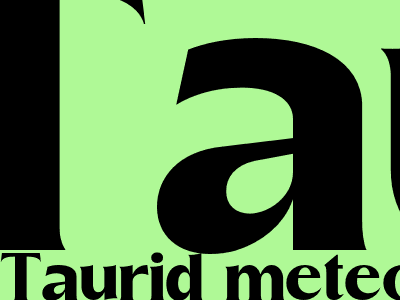
Taurid Meteor Shower Nearing Peak
Celestial Spectacle Set to Dazzle Stargazers
Catch a Glimpse of Shooting Stars This Month
As the celestial tapestry unfolds, one of the most enthralling astronomical events of the year, the Taurid meteor shower, is set to reach its peak. From October 26th to November 25th, meteor enthusiasts and casual stargazers alike will have the opportunity to witness a dazzling celestial spectacle as numerous meteors streak across the night sky.
Origin and Trajectory
The Taurid meteor shower originates from two distinct sources, each contributing to the shower's activity. The Southern Taurids, active from late October to early December, are associated with the comet 2004 TG10 and produce slower-moving meteors that typically originate from the constellation Taurus. The Northern Taurids, active from early October to mid-November, are associated with the comet Encke and give rise to faster-moving meteors that originate from the constellation Cassiopeia.
Peak Viewing and Conditions
The Taurid meteor shower is expected to peak on the night of November 11th, offering optimal viewing conditions. The shower's radiant point, from which the meteors appear to originate, will be located near the constellation Taurus for the Southern Taurids and near the constellation Cassiopeia for the Northern Taurids. Clear skies and dark viewing environments, away from light pollution, will enhance the visibility of the meteors.
Tips for Observation
To maximize your meteor-viewing experience, follow these tips:
- Choose a clear night with minimal light pollution
- Find a spot with an unobstructed view of the sky
- Allow your eyes about 30 minutes to adjust to the darkness
- Look for meteors streaking across the sky from the radiant point
- Be patient and persistent, as meteors can appear in clusters or sporadic intervals
Scientific Significance
The Taurid meteor shower holds scientific significance beyond its celestial beauty. By studying the meteors' orbits, composition, and distribution, scientists gain insights into the origins and evolution of our solar system. The shower's parent comets provide invaluable information about the early formation of planets and the presence of volatiles, such as water ice, in the outer regions of the solar system.
Cultural and Historical Significance
The Taurid meteor shower has captivated cultures throughout history. In ancient cultures, meteors were often seen as celestial messengers or omens. In modern times, the shower continues to inspire awe and wonder, fostering a sense of connection to the cosmos. Meteor-watching gatherings and events are organized worldwide, bringing people together to share the celestial experience.
Conclusion
The Taurid meteor shower is a celestial spectacle that combines scientific fascination, cultural intrigue, and breathtaking beauty. As the shower reaches its peak from October 26th to November 25th, stargazers and astronomy enthusiasts are encouraged to venture outdoors and witness this awe-inspiring phenomenon. With patience and a clear night sky, you can catch a glimpse of the shooting stars and marvel at the wonders of the universe.